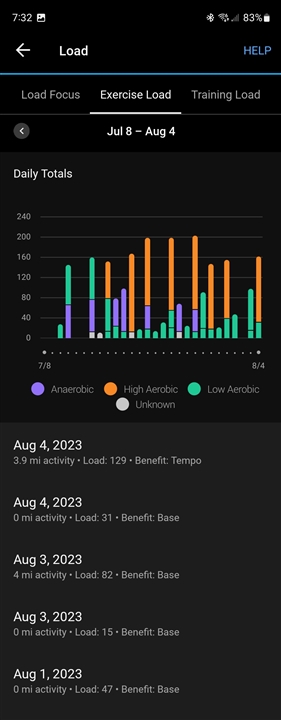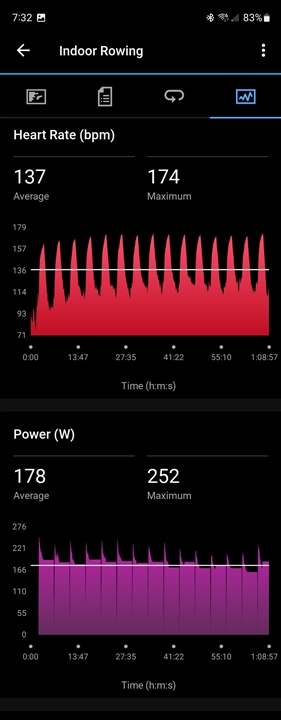I recently got a fenix 7s pro as a first garmin watch. I'm using a Polar H10 HR strap with it. I have 2 questions.
Question 1:
When I first got the watch I was getting some anaerobic training effect each time I did weight lifting. The entire weightlifting sessions would be categorized as anaerobic and would give anaerobic TE. Within the last week or 2, weightlifting stopped resulting in any anaerobic TE. I now have a shortage.
Overtime is it typical that it's more difficult to get anaerobic training effect? Is that just a mistake because of the watch being in the initial learning period and now that it knows more, it no longer ranks any of that as anaerobic?
Question 2:
Because I have an anaerobic shortage, I have been trying to do some anaerobic rowing sessions. Today I did 90 seconds of rows then 3 minute rest 15 times. I was watching the anaerobic/aerobic widget the entire session. I noticed it was increasing the anaerobic ratio until about interval 10 after which point it just stayed at 2.5. Even the aerobic counter only ticked up maybe .2 for the last 5 intervals.
Looking at the heart rate graph I can't figure out why. From what I understand you do not need to reach zone 5 and it primarily watches how quickly your heart rate increases and decreases. The rates of change look the same to me so I'm not sure what the difference is and why it stopped increasing once it got to 2.5








